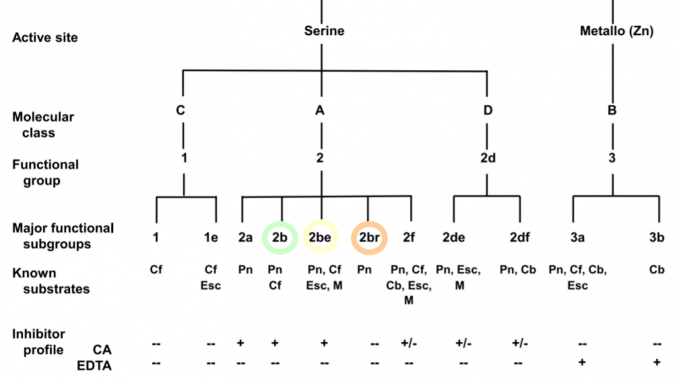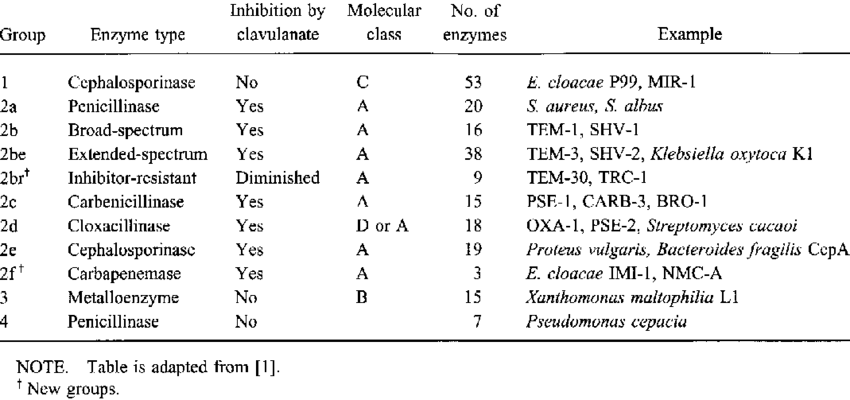
Beta-lactamase: functional classification
- Beta-lactamase is an enzyme capable of hydrolyzing β-lactam antibiotics. β-lactamase degrade β-lactam antibiotics by opening the β-lactam ring. The microorganisms producing beta-lactamase enzyme become resistant β-lactam antibiotics.
Classification of β-lactamase enzyme on the basis of function:
Group 1 β-lactamase :
- These are class-C enzyme and are cephalosporinase which are not inhibited by clavulanic acid.
- They are also resistant to cefamycin
Group 2 β-lactamase:
- These includes class-A enzyme and are penicillinase and cephalosporinase.
- Inhibited by clavulanic acid.
Sub class:
i. Group 2b e (extended spectrum) β-lactamase:
- These are ESBL capable of hydrolyzing penicillin even 3rd and 4th generation cephalosporin but are hydrolyzed by clavulanic acid.
ii. Group 2b r β-lactamase:
- These includes inhibitor resistant β-lactamase. These may be resistant to sulbactum and clavulanic acid but are susceptible to inhibition by tazobactum.
iii. Group 2c β-lactamase:
- These includes carbenicillinase. These enzymes hydrolyses carbenicillin more than Benzylpenicillin. These are class-A enzyme. They also show activity towards Oxacillin.
iv. Group 2d (extended spectrum) β-lactamase:
- These are class-A or D enzyme and includes Cloxacillinase (oxacillinase). These enzymes hydrolyses cloxacillin more than Benzylpenicillin and also has activity against carbenicillin.
v. Group 2e β-lactamase:
- These are class-A enzyme. These includes cephalosporinase. These are inhibited by clavulanic acid.
vi. Group 2f β-lactamase:
- These are class-A enzyme. These includes carbapenimase. These are serine based enzyme which are also inhibited by clavulanic acid.
Group 3 β-lactamase:
- These includes class-B enzyme and are zinc based metalloenzyme. Eg. Carbapenimase
- These are not inhibited by clavulanic acid.
- They are chromosomal mediated enzymes
Group 4 β-lactamase:
- These includes penicillinase
- These are not inhibited by clavulanic acid.

